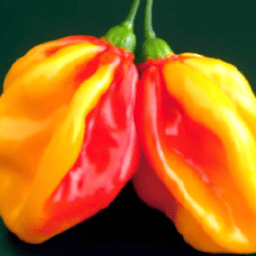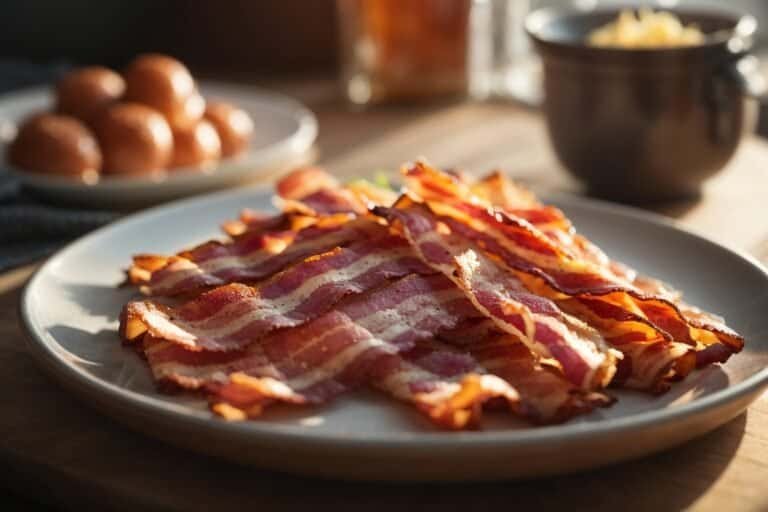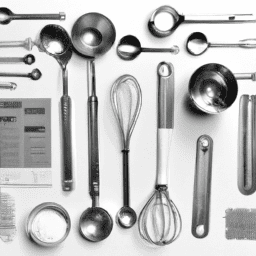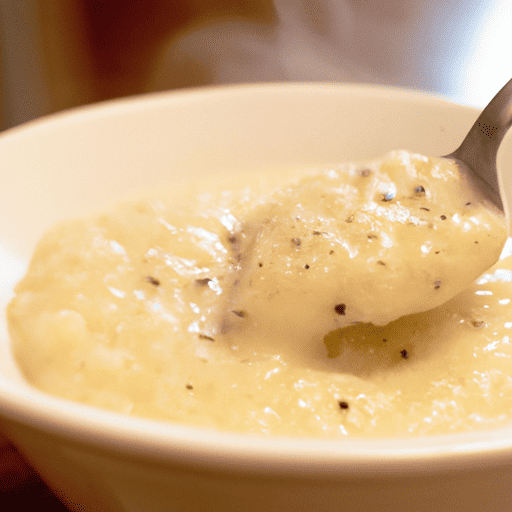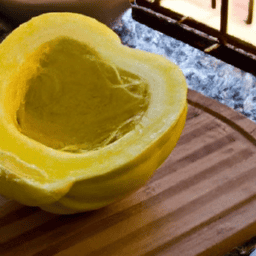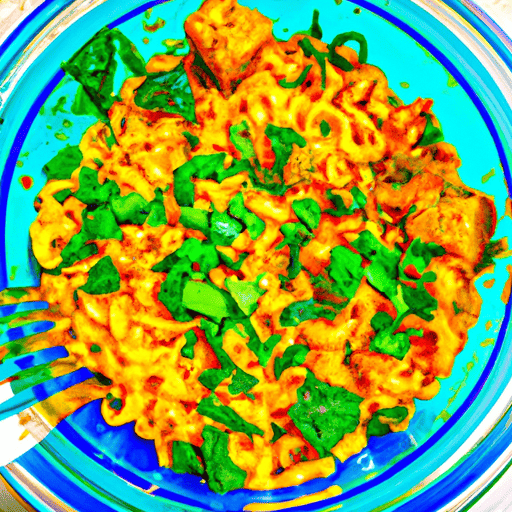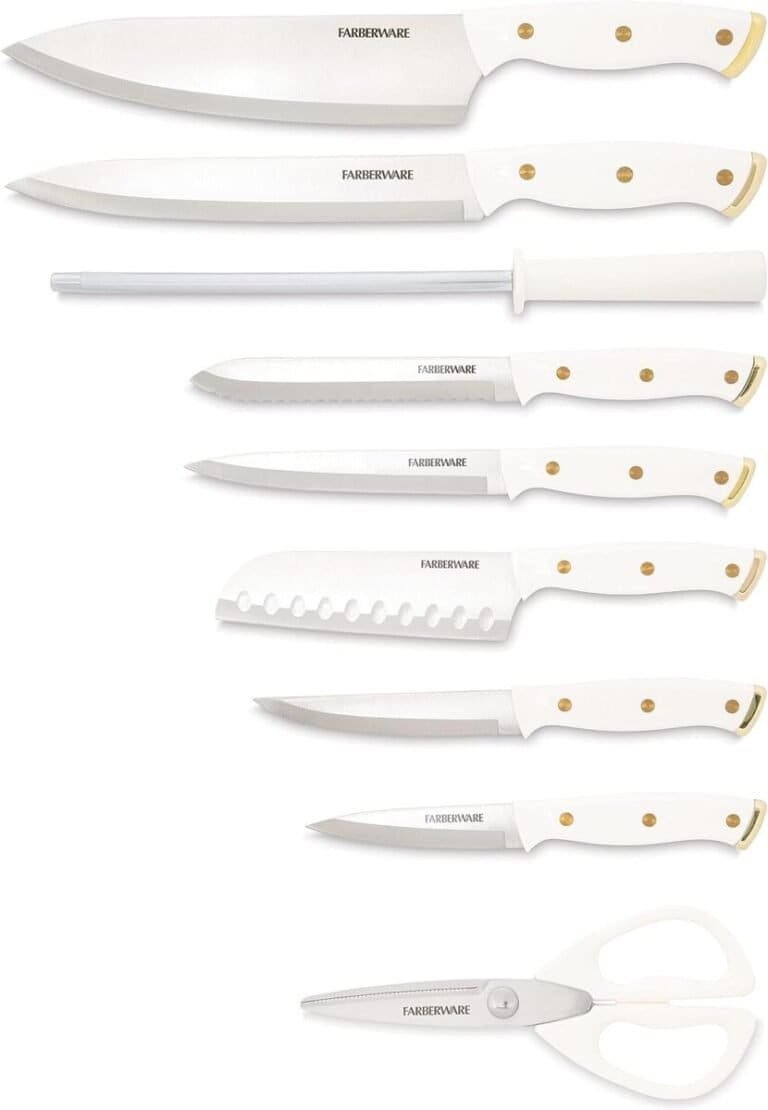How To Cook Like A Jamaican
If you’ve ever wanted to bring the vibrant flavors of Jamaican cuisine into your own kitchen, look no further. In this article, you’ll discover the secrets to cooking like a Jamaican. From spices that will transport you to the sandy beaches of the Caribbean, to techniques that will have your taste buds dancing to the rhythm of reggae, you’ll learn everything you need to know to create delicious and authentic Jamaican dishes. So grab your apron and get ready to embark on a culinary journey that will leave you craving for more.
Understanding Jamaican Cuisine
Jamaican cuisine is a vibrant fusion of flavors, influenced by a rich history and diverse cultural backgrounds. From the indigenous Taino people to the Spanish, British, African, and Indian immigrants, the country’s food culture is a melting pot of tastes and techniques. The dishes incorporate a wide array of spices, herbs, and ingredients that make it unique and beloved around the world.
The Influences on Jamaican Food Culture
Jamaican cuisine is heavily influenced by the different cultures that have shaped the island’s history. The Taino people introduced native ingredients such as cassava, corn, and peppers. When the Spanish arrived, they brought new flavors like citrus fruits, sugar cane, and various spices. The British colonization added a touch of European influence to Jamaican food, while the enslaved Africans contributed their knowledge of cooking techniques and the use of staple ingredients like yams and plantains. The arrival of Indian indentured laborers brought delicious curries and spices to the mix, contributing to the diverse culinary landscape of Jamaica.
Essential Jamaican Ingredients
To truly embrace Jamaican cuisine, there are a few essential ingredients that you should always have in your pantry. These include:
Scotch Bonnet Peppers
These small, fiery peppers are a staple in Jamaican cooking. They add a unique heat and flavor to dishes, whether they’re used in marinades, sauces, or stews. Be cautious when handling them, as they can be very spicy!
Allspice (Pimento)
Allspice, also known as pimento, is a key ingredient in Jamaican cuisine. Its warm, aromatic flavor is reminiscent of a mix of cloves, cinnamon, and nutmeg. It is often used in marinades for jerk seasoning, as well as in stews and curries.
Thyme
Thyme is an herb widely used in Jamaican cooking. It adds a distinct earthy flavor and works well with meats, stews, and rice dishes. Fresh thyme is preferred, but dried thyme can also be used if fresh is not available.
Coconut Milk
Coconut milk is a common ingredient in many Jamaican dishes, providing a rich and creamy base for sauces, soups, and desserts. It adds a lovely tropical taste and pairs well with the spices and flavors of the cuisine.
Jamaican Cooking Techniques
Jamaican cuisine employs various cooking techniques that help create the unique flavors and textures found in its dishes. Here are a few common techniques:
Jerking
Jerking is a traditional Jamaican cooking method that involves marinating meat (usually chicken or pork) in a combination of spices including allspice, thyme, scotch bonnet peppers, and more. The marinated meat is then slow-cooked over a wood fire or on a grill, resulting in tender, flavorful, and slightly smoky meat.
Stewing
Stewing is a popular cooking technique in Jamaican cuisine. It involves simmering ingredients, such as meat or vegetables, slowly in flavorful liquid until they become tender. Stews are often made with a combination of spices, herbs, and vegetables, creating a rich and hearty dish.
Steaming
Steaming is a healthy and delicious way of cooking seafood in Jamaican cuisine. Fish, such as red snapper or kingfish, is typically marinated with a flavorful blend of herbs, spices, and citrus juices. It is then placed in a steamer or wrapped in banana leaves and cooked until tender, resulting in a moist and flavorful dish.
Setting Up Your Jamaican Kitchen
If you are interested in delving into the world of Jamaican cooking, it’s essential to have the right tools and ingredients. Here are some recommendations for setting up your Jamaican kitchen:
Recommended Jamaican Cookware
Investing in some traditional Jamaican cookware can enhance your cooking experience and allow you to cook authentic Jamaican dishes. Some essential Jamaican cookware includes:
Dutch Pot
A Dutch pot, also known as a Dutch oven or Dutch kettle, is a versatile cooking vessel frequently used in Jamaican kitchens. Made of cast iron, it distributes heat evenly and retains heat well, making it perfect for slow-cooking stews and curries.
Grater
A grater is a must-have tool in a Jamaican kitchen, used for grating ingredients like coconut or ginger. Opt for a sturdy, box-style grater that can handle tough foods and make your job easier.
Mortar and Pestle
A mortar and pestle are used to crush herbs, spices, and peppers, releasing their flavors and oils. It’s an essential tool for making jerk marinades, grinding whole spices, or creating traditional Jamaican pastes.
Stocking Your Pantry with Jamaican Staples
When setting up your Jamaican kitchen, it is important to have a well-stocked pantry. Here are some Jamaican staples to keep on hand:
Rice and Beans
Rice and beans are a staple in Jamaican cuisine. Stock up on long-grain rice and red kidney beans to make dishes like rice and peas, a classic Jamaican side dish.
Flour and Cornmeal
Flour and cornmeal are versatile ingredients used in Jamaican cooking. They are essential for making dishes like Jamaican Johnny Cakes, dumplings, and various types of bread.
Coconut Milk
Coconut milk is a crucial ingredient in many Jamaican recipes. It adds a rich, creamy texture and a tropical taste to dishes like curry, soup, and desserts. Look for canned or powdered coconut milk.
Herbs and Spices Common in Jamaican Cuisine
Herbs and spices are at the heart of Jamaican cuisine, adding layers of flavor to dishes. Here are some common herbs and spices you should have in your pantry:
Allspice (Pimento)
Allspice is a critical spice in Jamaican cooking. Its warm, aromatic flavor complements various dishes, particularly in jerk seasoning and stews.
Scotch Bonnet Peppers
Scotch bonnet peppers are an iconic ingredient in Jamaican cuisine. These fiery peppers provide vibrant heat and flavor to marinades, sauces, and traditional dishes like jerk chicken.
Fresh Thyme
Fresh thyme is a staple herb in Jamaican cooking, used to add an earthy flavor to meats, stews, and rice dishes. It pairs well with other Jamaican spices and enhances the overall taste of the cuisine.
Preparing Popular Jamaican Dishes
Jamaican cuisine boasts an array of mouthwatering dishes that are both flavorful and satisfying. Here are step-by-step guides on how to prepare some popular Jamaican favorites:
How to Cook Ackee and Saltfish
Ackee and saltfish is Jamaica’s national dish, a delicious combination of the ackee fruit and salted codfish. To prepare this dish, follow these steps:
- Soak the salted codfish overnight in water to remove excess salt. Drain and shred the codfish into small pieces.
- Heat oil in a skillet and sauté chopped onions, bell peppers, and tomatoes until soft and fragrant.
- Add the shredded codfish to the skillet and cook for a few minutes, stirring occasionally.
- Rinse the canned or boiled ackee fruit and gently add it to the skillet, being careful not to break it apart.
- Season with black pepper, thyme, and scotch bonnet peppers for an extra kick.
- Cook the mixture for a few more minutes until the flavors meld together, then serve hot with fried dumplings or boiled green bananas.
The Process of Preparing Jamaican Jerk Chicken
Jerk chicken is an iconic Jamaican dish known for its bold, spicy flavors. Follow these steps to create your own flavorful jerk chicken:
- Start by preparing the marinade. In a blender or food processor, combine scallions, garlic, ginger, thyme leaves, brown sugar, allspice, soy sauce, lime juice, and scotch bonnet peppers.
- Blend the ingredients until they form a smooth paste.
- Rub the jerk marinade generously onto chicken pieces, ensuring they are well coated.
- Ideally, let the chicken marinate in the refrigerator for at least 2 hours or overnight to allow the flavors to penetrate the meat.
- Grill the marinated chicken on a barbecue or bake it in the oven until it reaches an internal temperature of 165°F (74°C).
- Serve your succulent jerk chicken with rice and peas, and don’t forget to garnish with fresh chopped scallions and a squeeze of lime for added zing.
Cooking Steps for Jamaican Curry Goat
Curry goat is one of the most beloved Jamaican dishes, with tender meat bathing in a fragrant and flavorful curry sauce. Here’s how to prepare this delightful dish:
- Season goat meat with salt, black pepper, and curry powder. Let it marinate for at least 30 minutes to allow the flavors to penetrate.
- In a large pot, heat oil over medium heat and sauté chopped onions until golden and fragrant.
- Add minced garlic, grated ginger, and curry powder to the pot, stirring well to coat the onions.
- Add the marinated goat meat to the pot and cook until browned on all sides.
- Pour in coconut milk, chicken or vegetable broth, and diced potatoes.
- Cover the pot and let the curry simmer over low heat for 1.5 to 2 hours, or until the goat meat is tender and the flavors have melded.
- Adjust the seasoning if needed, and serve the curry goat hot with rice, roti, or Jamaican festival.
Mastering Jamaican Breakfast Meals
Jamaican breakfasts are a true delight, with dishes that are hearty, comforting, and bursting with flavors. Here are some traditional Jamaican breakfast meals that you can master in your own kitchen:
Making Traditional Jamaican Callaloo
Callaloo is a popular Jamaican breakfast dish made from leafy greens, often referred to as amaranth or taro leaves. Follow these steps to cook authentic Jamaican callaloo:
- In a large pot, heat oil over medium heat and sauté chopped onions until translucent.
- Add minced garlic, thyme leaves, and scotch bonnet peppers to the pot, stirring well to release their fragrance.
- Wash the callaloo leaves carefully, remove the tough stems, and roughly chop them.
- Add the chopped callaloo leaves to the pot and stir until they wilt and become tender.
- Pour in coconut milk, simmer for a few minutes, and season the callaloo with salt, black pepper, and a dash of nutmeg for added flavor.
- Continue cooking until the callaloo reaches your desired consistency, then serve it hot alongside boiled green bananas, fried dumplings, or boiled yam.
Guidelines for Preparing Plantain Porridge
Plantain porridge is a creamy and comforting breakfast dish that showcases the versatility of plantains. Here’s how to prepare this Jamaican favorite:
- Peel and chop ripe plantains into small pieces.
- In a blender, combine the chopped plantains, coconut milk, vanilla extract, cinnamon, nutmeg, and a pinch of salt.
- Blend the ingredients until smooth and creamy.
- Pour the mixture into a pot and add water, then cook over medium heat, stirring occasionally to prevent sticking.
- Simmer the porridge until it thickens to your desired consistency, adding more water or coconut milk if needed.
- Sweeten the plantain porridge with brown sugar or honey, and serve it warm with a sprinkle of ground cinnamon on top.
Recipe for Jamaican Johnny Cakes
Johnny cakes are a delicious and versatile Jamaican breakfast staple, often enjoyed with a cup of tea or as a side to other morning dishes. To make Jamaican Johnny cakes from scratch, follow these steps:
- In a mixing bowl, combine flour, cornmeal, baking powder, salt, and sugar.
- Cut in cold butter or vegetable shortening until the mixture has a crumbly texture.
- Gradually add milk or water, stirring until the dough comes together. Adjust the liquid if needed to achieve a soft, slightly sticky dough.
- Divide the dough into small balls and flatten them slightly.
- Heat oil in a skillet over medium heat and fry the Johnny cakes until golden brown on both sides.
- Drain on paper towels to remove excess oil, and serve the Johnny cakes warm alongside your favorite Jamaican breakfast dishes.
Creating Jamaican Seafood Delicacies
Given its island location, it’s no surprise that Jamaican cuisine has a wide range of mouthwatering seafood dishes. Here are some recipes to help you create delicious Jamaican seafood delicacies:
Steps to making Jamaican Steamed Fish
Steamed fish is a light and flavorful dish in Jamaican cuisine, highlighting the natural flavors of the seafood. Follow these steps to prepare Jamaican steamed fish:
- Clean and scale the fish, then season it with salt, black pepper, and a squeeze of lime or lemon juice. Let it marinate for a few minutes.
- In a large pot or steamer, heat oil over medium heat and sauté chopped onions, bell peppers, thyme, and scotch bonnet peppers until softened.
- Place the marinated fish on top of the sautéed vegetables, and add a few slices of tomato and more thyme on top.
- Pour in coconut milk and a little water, enough to create some steam.
- Cover the pot tightly and let the fish steam until cooked through and flakes easily with a fork.
- Serve the steamed fish hot with boiled cassava, festival, or rice and peas for a complete Jamaican seafood experience.
Preparing Jamaican Escovitch Fish
Escovitch fish is a vibrant and tangy Jamaican dish that combines fried fish with a zesty vinegar-based sauce. Here’s how to prepare Jamaican escovitch fish:
- Clean and season the fish with salt, black pepper, and a little paprika. Let it marinate for 15-30 minutes.
- In a large skillet, heat oil over medium heat and fry the fish until golden and crispy on both sides. Remove the fish from the skillet and set it aside.
- In the same skillet, add thinly sliced onions, bell peppers, and carrots. Sauté them until slightly softened.
- In a separate pot, bring white vinegar to a boil. Pour the hot vinegar over the sautéed vegetables, and let the mixture cool slightly.
- Pour the escovitch sauce over the fried fish, ensuring that the vegetables are evenly distributed.
- Let the fish marinate in the sauce for a few hours or overnight to develop the flavors. Serve the escovitch fish cold or at room temperature, garnished with additional sliced veggies if desired.
How to Cook Jamaican Style Peppered Shrimp
Jamaican peppered shrimp is a bold and spicy dish that showcases the flavors of the sea with a fiery kick. Follow these steps to cook Jamaican style peppered shrimp:
- Clean and devein the shrimp, leaving the shells intact. Pat them dry with a paper towel.
- In a bowl, combine minced garlic, chopped scotch bonnet peppers, minced ginger, thyme leaves, and soy sauce.
- Toss the shrimp in the marinade, ensuring they are evenly coated. Let them marinate in the refrigerator for at least 30 minutes.
- Heat oil in a skillet over medium-high heat. Quickly sear the marinated shrimp until they turn pink and curl up, usually taking 2-3 minutes per side.
- Serve the Jamaican style peppered shrimp hot, as an appetizer or main dish. Garnish with fresh cilantro or parsley, and provide lime wedges for extra tang.
Crafting Jamaican Vegetarian Meals
If you prefer vegetarian cuisine, Jamaican cooking has a wide array of flavorful plant-based dishes. Here are some recipes for Jamaican vegetarian meals that celebrate the island’s vibrant flavors:
Recipe for Jamaican Pumpkin Soup
Jamaican pumpkin soup is a comforting and nutritious dish, perfect for chilly evenings. Follow these steps to prepare traditional Jamaican pumpkin soup:
- In a large pot, heat oil over medium heat and sauté chopped onions until golden and fragrant.
- Add minced garlic, thyme leaves, and diced carrots to the pot, stirring well to combine.
- Peel and chop a Jamaican pumpkin (also known as calabaza or West Indian pumpkin) into small cubes. Add the pumpkin cubes to the pot and stir.
- Pour in vegetable broth, coconut milk, and a can of red kidney beans. Bring the mixture to a boil, then reduce the heat and simmer until the pumpkin is tender.
- Season the soup with salt, black pepper, nutmeg, and a pinch of ground cinnamon for extra warmth.
- Use an immersion blender or transfer the soup to a blender, and blend until smooth and creamy.
- Serve the Jamaican pumpkin soup hot, garnished with freshly chopped parsley or cilantro. Pair it with Jamaican festival or slices of crusty bread for a satisfying meal.
Cooking Instructions for Jamaican Ital Stew
Ital stew is a staple in Rastafarian cuisine, focusing on natural and plant-based ingredients. Follow these cooking instructions to prepare Jamaican Ital stew:
- In a large pot, heat oil over medium heat and sauté diced onions and minced garlic until softened.
- Add chopped bell peppers, diced tomatoes, sliced carrots, and chopped potatoes to the pot, stirring well.
- Pour in vegetable broth and coconut milk, then add canned or cooked beans, such as red kidney beans or chickpeas.
- Season the stew with Jamaican curry powder, thyme leaves, salt, and black pepper to taste. Stir well to combine the flavors.
- Cover the pot and simmer the stew over low heat until the vegetables are tender and the flavors have melded together.
- Adjust the seasoning if needed, and serve the Jamaican Ital stew hot with steamed rice, roti, or breadfruit for a satisfying vegetarian meal.
Making Jamaican Vegetable Patties
Vegetable patties are a popular Jamaican street food, with a savory and flaky pastry filled with a flavorful vegetable mixture. Here’s how to make Jamaican vegetable patties from scratch:
For the pastry:
- In a large mixing bowl, combine all-purpose flour, turmeric powder, and salt. Mix well.
- Cut in cold butter or vegetable shortening until the mixture has a crumbly texture.
- Gradually add ice water, a little at a time, and mix until the dough comes together. Be careful not to overmix.
- Divide the dough into smaller portions and shape them into balls. Wrap each portion in plastic wrap and refrigerate for at least 30 minutes.
For the filling:
- Heat oil in a skillet over medium heat and sauté chopped onions until translucent.
- Add minced garlic, diced bell peppers, grated carrots, and diced potatoes to the skillet. Cook until the vegetables are tender.
- Season the mixture with Jamaican curry powder, thyme, salt, and black pepper. Stir well to incorporate the flavors.
- Allow the filling to cool before using it for the patties.
Putting it all together:
- Preheat the oven to 375°F (190°C). Line a baking sheet with parchment paper.
- Roll out each chilled dough ball into a thin circle on a floured surface.
- Place a spoonful of the vegetable filling onto one half of the dough circle, leaving a small border.
- Fold the other half of the dough over the filling, creating a semicircle. Seal the edges by crimping them with a fork.
- Repeat the process for the remaining dough and filling.
- Place the vegetable patties on the prepared baking sheet and brush the tops with beaten egg or milk for a golden crust.
- Bake the patties for 25-30 minutes, or until they are golden brown and flaky.
- Serve the freshly baked Jamaican vegetable patties hot or at room temperature for a satisfying vegetarian snack or meal.
Cooking Jamaican Desserts
Jamaican desserts are a sweet conclusion to any meal, showcasing delicious flavors and tropical ingredients. Here are some recipes for classic Jamaican desserts that are sure to impress:
Creating Gizzada – the Jamaican Coconut Tart
Gizzadas, also known as Jamaican coconut tarts, are delightful treats that combine a sweet coconut filling with a buttery pastry crust. Here’s how to create gizzadas:
For the pastry:
- In a large mixing bowl, combine all-purpose flour, granulated sugar, and salt. Mix well.
- Cut in cold butter or vegetable shortening until the mixture resembles coarse crumbs.
- Gradually add ice water, a little at a time, until the dough comes together. Be careful not to overmix.
- Divide the dough into smaller portions and shape them into disks. Wrap each disk in plastic wrap and refrigerate for at least 30 minutes.
For the filling:
- In a bowl, mix grated coconut, brown sugar, ground cinnamon, and a pinch of nutmeg.
- Stir well until the sugar is evenly distributed and the mixture becomes moist and crumbly.
Putting it all together:
- Preheat the oven to 375°F (190°C). Line a baking sheet with parchment paper.
- Roll out each chilled dough disk into thin circles on a floured surface.
- Place a spoonful of the coconut filling onto the center of each pastry circle, leaving a small border.
- Fold the edges of the pastry over the filling, creating a fluted crust that partially covers the filling.
- Repeat the process for the remaining pastry and filling.
- Place the gizzadas on the prepared baking sheet and bake for 15-20 minutes, or until the pastry is golden brown.
- Allow the gizzadas to cool before serving, and enjoy these delightful Jamaican coconut tarts with a cup of tea or on their own.
Steps for Preparing Jamaican Sweet Potato Pudding
Jamaican sweet potato pudding is a moist and flavorful dessert that is enjoyed year-round. Here’s a step-by-step guide on how to make this traditional dessert:
For the base:
- Peel and grate sweet potatoes into a large mixing bowl.
- Add brown sugar, grated coconut, flour, cornmeal, cinnamon, nutmeg, vanilla extract, and a pinch of salt to the bowl. Mix well until all the ingredients are combined.
- Gradually pour in melted butter, coconut milk, and evaporated milk. Continue mixing until the batter is smooth and well incorporated.
Putting it all together:
- Preheat the oven to 350°F (175°C). Grease a baking dish or line it with parchment paper.
- Pour the sweet potato mixture into the prepared baking dish, spreading it evenly.
- Bake the sweet potato pudding for approximately 1 hour, or until a toothpick inserted into the center comes out clean.
- Allow the pudding to cool before cutting it into squares or slices.
- Serve the Jamaican sweet potato pudding warm or at room temperature, as it is delicious on its own or can be paired with a dollop of whipped cream or a scoop of vanilla ice cream.
How to Make Jamaican Banana Fritters
Jamaican banana fritters are a delightful treat that showcases the island’s abundant tropical fruit. Follow these steps to make delicious Jamaican banana fritters:
- In a mixing bowl, mash ripe bananas until smooth.
- Add flour, baking powder, granulated sugar, ground cinnamon, nutmeg, salt, and a beaten egg to the mashed bananas.
- Mix all the ingredients together until a thick batter forms. If needed, add a splash of milk to achieve the desired consistency.
- Heat oil in a skillet over medium heat.
- Drop spoonfuls of the batter into the hot oil, using a tablespoon or an ice cream scoop.
- Cook the fritters for a few minutes on each side until golden brown.
- Remove the fritters from the skillet and drain them on paper towels to remove any excess oil.
- Serve the Jamaican banana fritters warm with a dusting of powdered sugar, a drizzle of honey, or a dollop of vanilla yogurt for a delightful tropical treat.
Brewing Jamaican Drinks
Jamaican culture also embraces a variety of delicious and refreshing drinks. From non-alcoholic beverages to the famous Jamaican rum, here are some recipes to help you brew your own Jamaican drinks:
Preparing Traditional Jamaican Ginger Beer
Jamaican ginger beer is a spicy and fizzy beverage that provides a refreshing way to cool down on hot days. Here’s how to prepare traditional Jamaican ginger beer:
- Peel and grate fresh ginger root into a large pot.
- Add water, sugar, crushed allspice berries, and a few slices of lemon or lime to the pot.
- Bring the mixture to a boil, then reduce the heat and simmer for about 20 minutes to infuse the flavors.
- Remove the pot from the heat and strain the ginger beer mixture, discarding the solids.
- Allow the liquid to cool, then refrigerate it until chilled.
- Serve the Jamaican ginger beer over ice, and garnish with additional slices of lemon or lime for an extra citrusy kick.
Recipe for Jamaican Rum Punch
Jamaican rum punch is a tropical and refreshing cocktail that perfectly captures the spirit of the island. Follow this recipe to create your own Jamaican rum punch:
Ingredients:
- 2 cups of Jamaican rum
- 1 cup of freshly squeezed lime juice
- 1 cup of orange juice
- 1 cup of pineapple juice
- 1 cup of grenadine syrup
- Ice cubes
Directions:
- In a large pitcher, combine Jamaican rum, freshly squeezed lime juice, orange juice, pineapple juice, and grenadine syrup.
- Stir the mixture until well combined.
- Fill glasses with ice cubes, then pour the Jamaican rum punch over the ice.
- Garnish with a slice of pineapple or an orange wedge if desired.
- Enjoy the tropical flavors of Jamaican rum punch, and sip slowly to savor every sip. Remember to drink responsibly.
Making Authentic Blue Mountain Coffee
Blue Mountain coffee is known worldwide for its exceptional quality and smooth flavor. Follow these steps to brew your own cup of authentic Blue Mountain coffee:
- Start with high-quality Blue Mountain coffee beans. Look for beans labeled “100% certified Blue Mountain.”
- Grind the coffee beans to a medium coarseness, aiming for a consistency similar to coarse sand.
- Bring water to a boil, then allow it to cool for about 30 seconds before pouring it over the coffee grounds.
- Use approximately 1 to 2 tablespoons of coffee grounds per 6-ounce cup of water, adjusting according to personal preference.
- Slowly pour the hot water over the coffee grounds, ensuring they are completely saturated.
- Allow the coffee to steep for about 4 minutes, then give it a gentle stir to ensure even extraction.
- After the steeping time, carefully plunge the coffee grounds to the bottom of the French press, or strain the coffee through a coffee filter.
- Pour the brewed Blue Mountain coffee into a cup or mug, and savor the smooth, rich flavors that make it so special.
Honoring Jamaican Food Traditions
Jamaican food traditions are deeply rooted in the country’s history and cultural celebrations. Here are some insights into the unique food traditions that Jamaicans hold dear:
Christmas Food Traditions in Jamaica
Christmas is a time of joy and celebration in Jamaica, and the cuisine plays a central role in the festivities. Traditional Christmas dishes include:
- Jerk Turkey: A Jamaican twist on the classic roasted turkey, marinated with jerk seasonings and slow-cooked for a flavorful and spicy holiday dish.
- Christmas Fruit Cake: Jamaican fruit cakes are dense, rich, and soaked in rum. They contain an abundance of dried fruits, including raisins, currants, prunes, and cherries, creating a moist and boozy cake.
- Sorrel: A delicious and refreshing drink made from dried hibiscus petals, steeped with spices like ginger, allspice, and cloves. This vibrant and tangy beverage is a staple during the Christmas season.
Typical Foods for Jamaican Festival Days
Jamaican festivals, such as Independence Day, Emancipation Day, and Bob Marley’s birthday, are celebrated with traditional Jamaican foods that bring communities together. Some typical foods for Jamaican festival days include:
- Ackee and Saltfish: The national dish of Jamaica, often enjoyed on special occasions and national holidays. Ackee, a fruit that resembles scrambled eggs when cooked, is combined with salted codfish for a flavorful and satisfying dish.
- Escovitch Fish: A popular dish served during Jamaican festivals, where fried fish is topped with a tangy sauce made from vinegar, onions, and bell peppers. Escovitch fish is known for its vibrant colors and bold flavors.
- Bammy: A traditional Jamaican flatbread made from grated cassava. It can be enjoyed alone or as a side dish to accompany savory dishes like jerk chicken or curry goat.
Understanding the Rastafarian Diet
The Rastafarian diet is deeply connected to the principles and beliefs of the Rastafari movement. It focuses on natural and unprocessed foods, primarily plant-based ingredients. Some key tenets of the Rastafarian diet include:
- Ital Food: The term “ital” refers to food that is natural, pure, and unprocessed. Rastafarians believe that eating ital food promotes health, spiritual growth, and a connection to nature. Staples of the ital diet include fruits, vegetables, legumes, whole grains, and herbs.
- Avoidance of Meat: Many Rastafarians follow a vegetarian or vegan lifestyle, abstaining from consuming meat, fish, or other animal products. This stems from their beliefs in the sanctity of all living beings and the desire to live in harmony with nature.
- Importance of Freshness: Rastafarians prioritize eating fresh and locally sourced ingredients whenever possible, emphasizing the importance of supporting local farmers and reducing the carbon footprint.
Exploring Contemporary Jamaican Cooking
While traditional Jamaican cuisine holds a special place in the country’s culinary scene, Jamaican gastronomy is also evolving and embracing contemporary influences. Here are some aspects of contemporary Jamaican cooking you may come across:
Fusion in Jamaican Cuisine
Contemporary Jamaican cuisine is increasingly embracing fusion, combining traditional Jamaican flavors with culinary influences from around the world. Chefs are experimenting with new techniques, flavor combinations, and ingredients to create innovative and exciting dishes that still pay homage to the island’s cuisine.
Popular Jamaican Street Foods
Jamaican street food is vibrant and full of bold flavors. Popular street food options include:
- Patties: Flaky pastries filled with a variety of savory fillings such as ground beef, chicken, or vegetables. They are a quick and satisfying snack enjoyed by locals and visitors alike.
- Jerk Chicken and Pork: The aroma of jerk chicken or pork grilling on the streets of Jamaica is irresistible. These marinated and grilled meats are often served with festival (sweet fried dumplings) or bread for a mouthwatering street food experience.
Current Trends in Jamaican Gastronomy
Jamaican gastronomy is evolving rapidly, with chefs and food enthusiasts embracing new culinary trends. Some current trends in modern Jamaican cooking include:
- Farm-to-Table Movement: Restaurants and chefs are increasingly sourcing their ingredients directly from local farmers and producers, promoting sustainability and supporting the local economy.
- Plant-Based Revolution: With the rise in vegan and vegetarian lifestyles, Jamaican cuisine is adapting to provide more plant-based options. Restaurants and cafes now offer creative plant-based versions of traditional Jamaican dishes, showcasing the versatility of local ingredients.
- Culinary Tourism: Food has become a significant draw for tourists visiting Jamaica. Culinary tours, cooking classes, and farm-to-table experiences allow visitors to immerse themselves in the vibrant flavors and culinary traditions of the island.
As you embark on your journey to understand Jamaican cuisine, remember that it is a beautiful blend of history, culture, and flavors. Whether you’re recreating traditional dishes or experimenting with contemporary twists, the heart of Jamaican cooking lies in the love and joy that goes into each dish. So grab your apron, gather the ingredients, and let the flavors of Jamaica transport you to a culinary paradise. Happy cooking!

